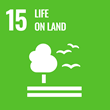Project information
Prach v prostředí jako důležitá expoziční cesta člověka působení endokrinních disruptorů

- Project Identification
- GA19-20479S
- Project Period
- 1/2019 - 6/2022
- Investor / Pogramme / Project type
-
Czech Science Foundation
- Standard Projects
- MU Faculty or unit
- Faculty of Science
Environmental exposure to endocrine disrupting chemicals (EDCs) is an important route of human exposure to these high priority substances. As people spend most of their time indoors, exposure through indoor environments is a relevant pathway for EDCs such as flame retardants, plasticizers and biocides. Indoor dust is a sink for many EDCs and its ingestion can result in possible risk to humans due to toxic effects from dust exposure. This project will address key research gaps linking concentrations of EDCs in dust with toxic effects by assessing the physical and chemical composition, bioaccessibility and in vitro toxicity of indoor dust samples covering a representative set of indoor environments. The composition of EDCs in dusts will be determined using state-of-the-art mass spectrometry to enable screening of ~200 individual EDCs. Bioaccessibility will be assessed using a novel passive sampling method linking with laboratory-based gut bioaccessibility tests. Toxicity will be evaluated using a wide range of in vitro toxicity tests on both the bulk dust and bioaccessible fraction, and mixture toxicity modelling will be used to link the toxicity and chemical profiles. Finally, drivers of toxicity will be assessed through effect-directed analysis, and the results from individual project elements will be linked to develop a conceptual model of dust exposure and toxicity.
Sustainable Development Goals
Masaryk University is committed to the UN Sustainable Development Goals, which aim to improve the conditions and quality of life on our planet by 2030.
Publications
Total number of publications: 8
2024
-
Endocrine disrupting potential of total and bioaccessible extracts of dust from seven different types of indoor environment
Journal of Hazardous Materials, year: 2024, volume: 469, edition: May 2024, DOI
2023
-
Accessibility investigation of semi-volatile organic compounds in indoor dust estimated by multi-ratio equilibrium passive sampling
Environmental Research, year: 2023, volume: 219, edition: February 2023, DOI
2022
-
Questioning the appropriateness of sieving for processing indoor settled dust samples
Journal of Environmental Exposure Assessment, year: 2022, volume: 1, edition: 3, DOI
-
Toxicity to bronchial cells and endocrine disruptive potentials of indoor air and dust extracts and their association with multiple chemical classes
Journal of Hazardous Materials, year: 2022, volume: 424, edition: February 2022, DOI
2021
-
Calibration of silicone for passive sampling of semivolatile organic contaminants in indoor air
Chemosphere, year: 2021, volume: 279, edition: September 2021, DOI
-
Targeted and suspect screening of plasticizers in house dust to assess cumulative human exposure risk
Science of the Total Environment, year: 2021, volume: 781, edition: August 2021, DOI
2020
-
Emerging investigator series: air conditioning filters as a sampler for semi-volatile organic compounds in indoor and near-building air
Environmental Science: Processes and Impacts, year: 2020, volume: 22, edition: 12, DOI
-
Indoor dust and associated chemical exposures
Current Opinion in Environmental Science and Health, year: 2020, volume: 15, edition: June, DOI

